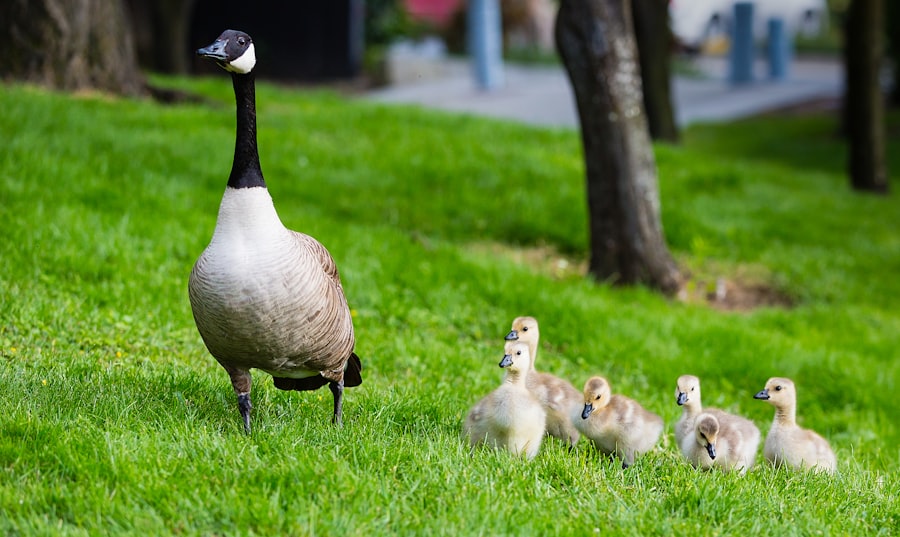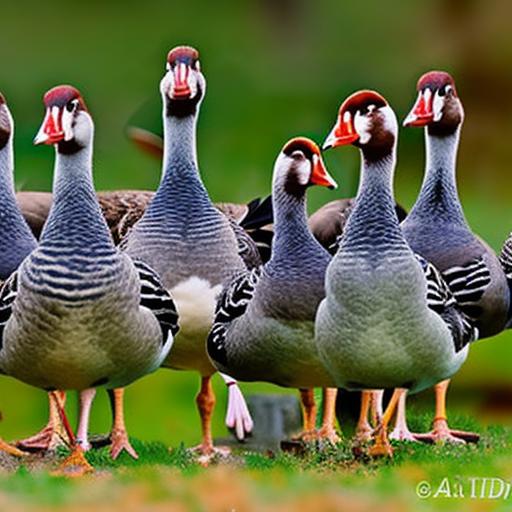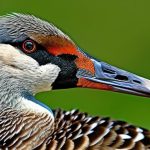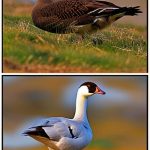Backyard geese breeds are becoming increasingly popular among homeowners who are looking for a unique and rewarding addition to their property. These beautiful and intelligent birds can provide companionship, pest control, and even a source of fresh eggs. However, with so many different breeds to choose from, it can be overwhelming to know which one is right for you. That’s why we’ve put together this comprehensive guide to backyard geese breeds. Whether you’re a beginner or an experienced goose owner, this post will provide you with all the information you need to make an informed decision.
Key Takeaways
- Backyard geese breeds come in a variety of sizes, colors, and temperaments.
- Understanding the different types of backyard geese breeds can help you choose the right one for your home.
- Popular backyard geese breeds have unique characteristics that make them suitable for different purposes.
- When choosing a backyard geese breed, consider factors such as space, climate, and your personal preferences.
- Breeding and raising backyard geese requires proper care, feeding, and attention to their health and well-being.
Understanding the Different Types of Backyard Geese Breeds
When it comes to backyard geese breeds, there are three main types: domestic, wild, and ornamental. Domestic geese are the most common type and are bred specifically for their meat, eggs, or as pets. Wild geese, on the other hand, are not typically kept as pets and are more commonly found in their natural habitats. Finally, ornamental geese are bred for their unique and striking appearances and are often kept for aesthetic purposes.
Some examples of domestic geese breeds include the Toulouse, Embden, and Chinese geese. Toulouse geese are known for their large size and calm temperament, making them a popular choice for both meat production and as pets. Embden geese are also large in size but have a more active and curious nature. Chinese geese, on the other hand, are smaller in size but have a distinctive appearance with their knobbed heads and graceful necks.
Characteristics of Popular Backyard Geese Breeds
1. Toulouse Geese: Toulouse geese are one of the largest domestic goose breeds, with males weighing up to 30 pounds and females weighing up to 20 pounds. They have a calm and friendly temperament, making them suitable for families with children or as pets. Toulouse geese have a gray plumage with a white underbelly and are known for their excellent meat production.
2. Embden Geese: Embden geese are also large in size, with males weighing up to 30 pounds and females weighing up to 20 pounds. They have a white plumage and a curious and active nature. Embden geese are known for their excellent egg production and are often kept for both meat and egg purposes.
3. Chinese Geese: Chinese geese are smaller in size compared to Toulouse and Embden geese, with males weighing up to 12 pounds and females weighing up to 10 pounds. They have a distinctive appearance with their knobbed heads and graceful necks. Chinese geese are known for their excellent egg production and are often kept as pets or for ornamental purposes.
Choosing the Right Backyard Geese Breed for Your Home
When choosing a backyard geese breed, there are several factors to consider. First, you need to assess the space you have available. Geese require ample space to roam and graze, so if you have a small backyard, you may want to consider a smaller breed like the Chinese goose.
Climate is another important factor to consider. Some breeds are more cold-hardy than others, so if you live in a colder climate, you may want to choose a breed like the Embden goose, which has a thick layer of insulating feathers.
Finally, consider the purpose of keeping geese. If you’re primarily interested in meat production, breeds like the Toulouse or Embden goose would be suitable choices. If you’re looking for a pet or ornamental bird, the Chinese goose may be more suitable.
To make the right choice, it’s important to do your research and talk to experienced goose owners or breeders who can provide guidance based on your specific needs and circumstances.
Breeding and Raising Backyard Geese: Tips and Tricks
Breeding and raising backyard geese can be a rewarding experience, but it requires careful planning and preparation. Here are some tips and tricks for successful breeding and raising:
1. Select healthy breeding stock: When choosing geese for breeding, select birds that are healthy, have good conformation, and exhibit desirable traits. Avoid birds with genetic defects or health issues.
2. Provide a suitable nesting area: Geese require a safe and comfortable nesting area to lay their eggs. Provide a secluded spot with plenty of straw or other nesting materials.
3. Incubation and hatching: Geese eggs take about 28-35 days to hatch. If you don’t have a broody goose to incubate the eggs, you can use an incubator. Monitor the temperature and humidity levels carefully during the incubation period.
4. Raising goslings: Goslings require special care during their first few weeks of life. Provide them with a warm and secure brooder area, feed them a balanced diet, and ensure they have access to clean water at all times.
Feeding and Caring for Backyard Geese: A Beginner’s Guide

Feeding and caring for backyard geese is relatively straightforward, but it’s important to provide them with a balanced diet and proper care to ensure their health and well-being. Here’s a beginner’s guide to feeding and caring for backyard geese:
1. Feeding: Geese are grazers by nature, so they should have access to fresh grass or pasture as much as possible. In addition to grazing, you can supplement their diet with commercial waterfowl feed or a balanced poultry feed. Provide fresh water at all times.
2. Housing: Geese require shelter from the elements, especially during extreme weather conditions. Provide them with a secure and well-ventilated shelter that protects them from rain, wind, and predators.
3. Grooming: Geese have a natural oil gland near their tail that they use to preen and waterproof their feathers. However, they may occasionally need help with grooming, especially if they are unable to access water for bathing. You can assist by gently spraying them with water or providing a shallow pool for them to bathe in.
4. Health care: Regularly inspect your geese for signs of illness or injury. Provide them with regular veterinary care, including vaccinations and deworming. Keep their living area clean and free from parasites.
Common Health Issues and Diseases in Backyard Geese
Like any other animal, backyard geese are susceptible to certain health issues and diseases. Here are some common health issues and diseases in backyard geese:
1. Respiratory infections: Geese can develop respiratory infections, especially if they are kept in damp or poorly ventilated conditions. Symptoms may include coughing, sneezing, nasal discharge, and difficulty breathing.
2. Parasites: Geese can be affected by external parasites like mites and lice, as well as internal parasites like worms. Regularly inspect your geese for signs of infestation and provide appropriate treatment.
3. Botulism: Botulism is a bacterial infection that can affect geese that consume contaminated water or food. Symptoms may include weakness, paralysis, and difficulty breathing.
To prevent these health issues, it’s important to provide your geese with a clean and sanitary living environment, a balanced diet, and regular veterinary care.
Training Backyard Geese: Techniques and Strategies
Training backyard geese is an important part of responsible ownership. Well-trained geese are easier to handle, less likely to exhibit aggressive behavior, and more enjoyable to be around. Here are some techniques and strategies for successful training:
1. Start early: Begin training your geese when they are young goslings. They are more receptive to learning at this age and will be more likely to develop positive behaviors.
2. Use positive reinforcement: Reward your geese with treats, praise, or affection when they exhibit desired behaviors. This will encourage them to repeat those behaviors in the future.
3. Be consistent: Establish clear rules and boundaries and be consistent in enforcing them. Geese thrive on routine and structure, so consistency is key to successful training.
4. Be patient: Training geese takes time and patience. Don’t expect immediate results and be prepared for setbacks along the way. Stay calm and persistent, and your geese will eventually learn what is expected of them.
The Benefits of Keeping Backyard Geese as Pets
Keeping backyard geese as pets can be a rewarding experience for several reasons:
1. Companionship: Geese are social animals that can form strong bonds with their owners. They enjoy spending time with their human companions and can provide a sense of companionship and connection.
2. Pest control: Geese are excellent at controlling pests like insects and weeds. They will happily graze on grass, weeds, and other vegetation, helping to keep your yard or garden free from unwanted pests.
3. Fresh eggs: Many backyard geese breeds are excellent egg layers, providing you with a source of fresh and nutritious eggs. Geese eggs are larger than chicken eggs and have a rich flavor.
4. Aesthetics: Backyard geese breeds come in a variety of beautiful colors and patterns, making them a visually appealing addition to your property.
Frequently Asked Questions About Backyard Geese Breeds
1. How long do backyard geese live? On average, backyard geese can live up to 20 years or more with proper care.
2. How many eggs do backyard geese lay? The number of eggs a goose lays depends on the breed and individual bird. On average, geese can lay anywhere from 20 to 50 eggs per year.
3. Can backyard geese fly? Most domestic backyard geese breeds are too heavy to fly long distances. However, they are capable of short flights and can use their wings for balance and protection.
For readers who want to learn more about backyard geese breeds, there are several additional resources available, including books, online forums, and local breeders or poultry associations.
In conclusion, backyard geese breeds can be a wonderful addition to your home. Whether you’re looking for a pet, pest control, or a source of fresh eggs, there is a breed out there that will suit your needs. By understanding the different types of backyard geese breeds, their unique characteristics, and the factors to consider when choosing one, you can make an informed decision. Additionally, by learning about breeding and raising geese, feeding and caring for them, training techniques, and common health issues, you can ensure the well-being and happiness of your geese. So why not consider adding some geese to your backyard? They may just become your new favorite companions.
If you’re interested in backyard geese breeds, you may also want to check out this informative article on poultrywizard.com about how many eggs geese lay. Understanding the egg-laying habits of geese is essential for anyone considering raising these beautiful birds. To learn more about this topic, click here. Additionally, if you’re looking for tips on turning a shed into a chicken coop or need inspiration for a chicken coop design in Grand Island, Nebraska, be sure to visit this link and this link respectively. Happy reading and happy poultry keeping!
FAQs
What are backyard geese breeds?
Backyard geese breeds are domesticated breeds of geese that are commonly kept in backyard farms or homesteads for their meat, eggs, feathers, or as pets.
What are the common breeds of backyard geese?
The common breeds of backyard geese include Toulouse, Embden, African, Chinese, Sebastopol, and Pilgrim geese.
What is the Toulouse goose breed?
The Toulouse goose breed is a large domesticated breed of geese that originated in France. They are known for their gray plumage, calm temperament, and high meat yield.
What is the Embden goose breed?
The Embden goose breed is a large domesticated breed of geese that originated in Germany. They are known for their white plumage, docile temperament, and high egg production.
What is the African goose breed?
The African goose breed is a medium-sized domesticated breed of geese that originated in Africa. They are known for their gray plumage, loud honking, and good meat and egg production.
What is the Chinese goose breed?
The Chinese goose breed is a medium-sized domesticated breed of geese that originated in China. They are known for their white or gray plumage, distinctive knob on their forehead, and good meat and egg production.
What is the Sebastopol goose breed?
The Sebastopol goose breed is a medium-sized domesticated breed of geese that originated in Europe. They are known for their curly feathers, calm temperament, and good meat and egg production.
What is the Pilgrim goose breed?
The Pilgrim goose breed is a medium-sized domesticated breed of geese that originated in the United States. They are known for their gray or white plumage, distinctive knob on their forehead, and good meat and egg production.
Meet Walter, the feathered-friend fanatic of Florida! Nestled in the sunshine state, Walter struts through life with his feathered companions, clucking his way to happiness. With a coop that’s fancier than a five-star hotel, he’s the Don Juan of the chicken world. When he’s not teaching his hens to do the cha-cha, you’ll find him in a heated debate with his prized rooster, Sir Clucks-a-Lot. Walter’s poultry passion is no yolk; he’s the sunny-side-up guy you never knew you needed in your flock of friends!







